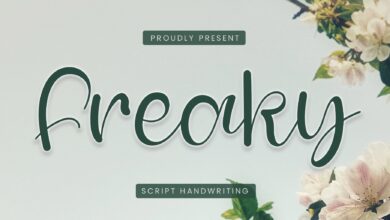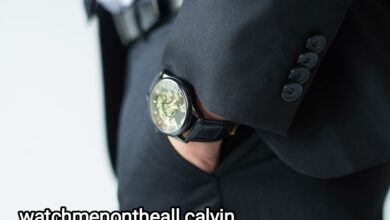Understanding Recurbate: Meaning, Usage, and Applications

Recurbate is a term that often arises in various scientific and technical contexts, primarily in biology, architecture, and other specialized fields. The term, although not commonly used in everyday language, plays an essential role in describing specific characteristics or traits. This article delves into the meaning of “recurbate,” its application across different domains, and its broader implications in both scientific research and practical applications.
What Does “Recurbate” Mean?
The word “recurbate” originates from the Latin term recurvare, meaning to bend backward or curve. In its broadest sense, “recurbate” refers to something that is bent or curved backward, typically beyond the normal alignment. This curvature can be observed in various forms, whether in natural organisms or human-made structures. When something is described as recurvate, it implies that it has a characteristic where a portion is turned backward or takes on an inverted curve.
In many cases, the term is used as an adjective. For example, in biology, one might describe a leaf or a claw as recurvate if it bends backward or curves in a way that is distinct from the typical shape. Similarly, recurvate can apply to architectural elements where certain components are designed with backward curvatures to serve functional or aesthetic purposes.
Recurbate in Biology
In biology, “recurbate” is frequently used to describe the shape or orientation of various anatomical features. It is most commonly applied to describe plant structures, such as leaves, stems, or flowers. A recurvate leaf, for example, is one that has a backward bend, which can be a natural adaptation to environmental conditions like wind or heavy rainfall. Some species of plants have recurvate leaves as a mechanism for water drainage or to maximize sunlight exposure.
In the animal kingdom, the term recurvate is often used to describe claws or beaks. Certain species of birds, for example, have recurvate beaks that are curved backward to help them catch prey more efficiently or to access food sources that are otherwise difficult to reach. The recurvate feature of such beaks enables the animal to perform specialized tasks with greater precision and ease.
Moreover, recurvate can describe the curvature of a bird’s or insect’s wings, which plays a role in flight mechanics. Certain species have evolved wings with a recurvate shape to enhance aerodynamics and maneuverability. This curved form is essential for improving lift and stability during flight, particularly in species that engage in rapid or precise movements.
Recurvate and Adaptation in Nature
The recurvate characteristic in biology is often an example of natural selection and adaptation. Many organisms evolve recurvate features as a way to better interact with their environment. For instance, birds that hunt fish may develop recurvate claws or beaks to hold slippery prey. Likewise, certain plants may develop recurvate leaves to prevent water accumulation or to reduce damage from harsh weather conditions.
In this context, the recurvate shape is not merely a random anomaly, but rather a feature that provides a specific survival advantage. The recurring theme across nature is that recurvate structures often serve a practical function, enhancing the organism’s ability to thrive in its ecosystem.
Recurbate in Architecture and Design
Beyond biology, the term recurvate is also used in architecture, particularly in the design of arches and structural components. A recurvate arch, for example, refers to an arch that curves backward, creating a distinct visual and structural effect. This type of arch is often used for aesthetic purposes, giving buildings a unique and elegant appearance.
In some cases, recurvate arches are not merely decorative but serve functional purposes. A recurvate arch can help distribute weight more evenly across a structure, making it more stable and less prone to damage. This feature is particularly beneficial in the construction of large-scale buildings and bridges, where structural integrity is of utmost importance.
Architectural elements that feature recurvate designs can be found in both traditional and modern architecture. Some historic buildings incorporate recurvate arches and columns as a stylistic choice, while contemporary designs may use recurvate forms to create more dynamic and visually striking spaces.
The Role of Recurvate Design in Modern Architecture
In modern architecture, recurvate forms are often employed to challenge conventional straight lines and create fluid, organic shapes. This has been especially prevalent in the works of postmodern architects, who seek to break free from rigid geometric forms. The recurvate curve adds a sense of movement and flow to architectural designs, making spaces feel more dynamic and less static.
Moreover, recurvate elements in architecture can also have practical benefits. Curved surfaces, for instance, can reduce the amount of material needed for construction while maintaining structural strength. This is particularly useful in large-scale structures, where optimizing material usage can lead to significant cost savings.
Recurbate in Engineering and Technology
In engineering, the term recurvate is sometimes used to describe specific mechanical components or structures. For example, recurvate gears or springs may be designed to bend or curve in a particular way to enhance their performance. In some cases, these components are used in advanced machinery, where the precise curvature of the part is crucial for its functionality.
Recurvate components are often seen in robotics, where joints and actuators need to achieve specific movements. In these cases, the recurvate design can help improve the flexibility and range of motion, allowing for more complex tasks to be performed. Similarly, in aerospace engineering, recurvate designs can be used to optimize the performance of various parts, such as wings or propellers, to achieve better aerodynamics and fuel efficiency.
Practical Applications of Recurvate Design
The concept of recurvate design is not confined to biological or architectural contexts. In fact, recurvate shapes are utilized in a wide range of industries and disciplines. Some examples of practical applications include:
- Sports Equipment: Recurvate designs are used in sports equipment such as fishing rods, archery bows, and tennis rackets. The curvature of these objects enhances their performance, whether by improving accuracy, increasing strength, or optimizing the action of the equipment.
- Fashion Design: In fashion, recurvate lines and curves are often used to create flattering silhouettes. A recurvate seam or hemline can help emphasize certain areas of the body or create a particular shape, enhancing the overall aesthetic appeal of a garment.
- Transportation: In the design of vehicles, recurvate elements are often used to improve aerodynamics. The curvature of car bodies, airplane wings, and bicycle frames can help reduce drag and increase efficiency.
- Furniture Design: Curved or recurvate furniture pieces are designed to create more comfortable and ergonomic seating. Recurvate chairs or couches, for example, can better support the natural curves of the body, providing a more relaxing and supportive sitting experience.
The Future of Recurvate Designs
As technology continues to advance, the use of recurvate designs is likely to expand. In the future, we may see even more applications of recurvate forms in fields such as nanotechnology, sustainable architecture, and advanced robotics. As we gain a deeper understanding of how curvature impacts performance and efficiency, recurvate structures will likely play an increasingly important role in innovation.
With the rise of digital fabrication techniques, such as 3D printing and computer-aided design (CAD), the creation of recurvate components has become more accessible and cost-effective. This means that recurvate designs, once reserved for specialized fields, may become more commonplace in everyday products and structures.





009casino sở hữu giao diện trang web hiện đại, dễ sử dụng và tốc độ tải cực nhanh. Các trò chơi như baccarat, roulette, và slots đều được thiết kế đẹp mắt, mượt mà, tạo cảm giác như đang chơi tại casino thực tế. Dịch vụ hỗ trợ khách hàng cũng rất chuyên nghiệp, phản hồi nhanh chóng và tận tình giải đáp mọi thắc mắc. Nếu bạn đang tìm kiếm một nền tảng casino trực tuyến uy tín và thú vị, thì 009Casino là lựa chọn không thể bỏ qua. Chắc chắn mình sẽ quay lại chơi thường xuyên! https://009casino.vip/
I haven¦t checked in here for a while as I thought it was getting boring, but the last few posts are good quality so I guess I will add you back to my daily bloglist. You deserve it my friend 🙂